sad thing is, sometimes kids try to indicate they are in danger but adults just don't believe them
8 Things Parents Should Teach Their Kids to Protect Them From Abduction
As sad as it may be, children get abducted, and it happens more often than you might think. Moreover, the “bad guy” isn’t always a guy, and they don’t always look threatening — it could even be someone you know. So it’s important to take precautions and teach your kids who they can trust and what they should do if someone wants to take them somewhere without your knowledge.
We at Bright Side hope nothing like this ever happens to you or your children, but we want you to be prepared.
1. Danger doesn’t always come from a stranger.
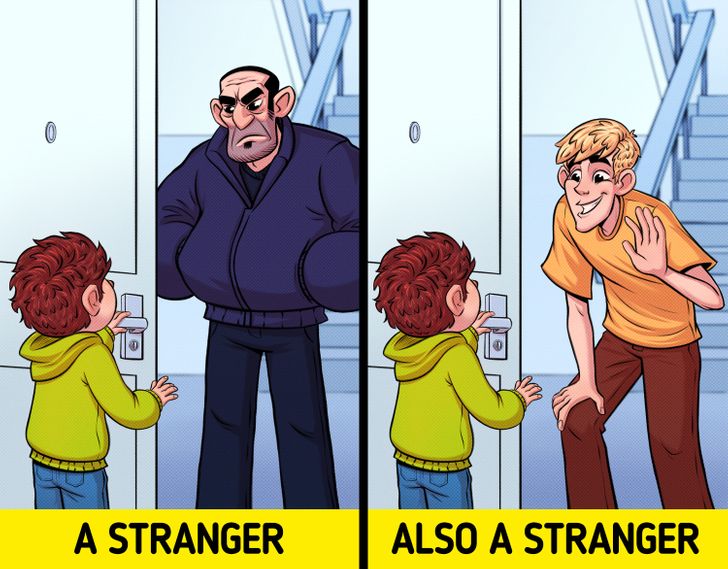
It may be hard for a child to understand who’s a stranger and who they can trust. They might imagine someone scary-looking, but that’s not always what a person who could hurt them looks like. “Strangers” can also appear nice and friendly. In fact, it’s more often the case that children are abducted by someone they actually know and wouldn’t consider a stranger.
2. Who to consider a “safe” adult

Make a list of people your child can trust — people that can pick them up from school or come by your house even if your kid is home alone. It could be a relative, a neighbor that you know well, or a babysitter.
Tell your child about them, and say that if anyone else comes by or approaches them outside, it’s not safe to talk to them. You can even pick a code word that only you, your kid, and the “safe” people know. That way it might be easier for your child to understand who to trust.
3. Run in the opposite direction of the car.
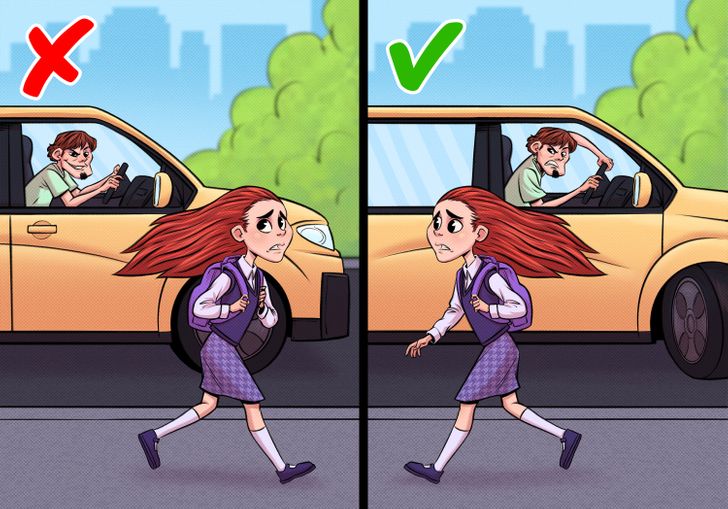
Teach your kid that if they are being followed by someone driving a car, they should run in the opposite direction. That way, the car will have to turn around, and your kid will have more time to run away.
4. Look for a mom with kids.
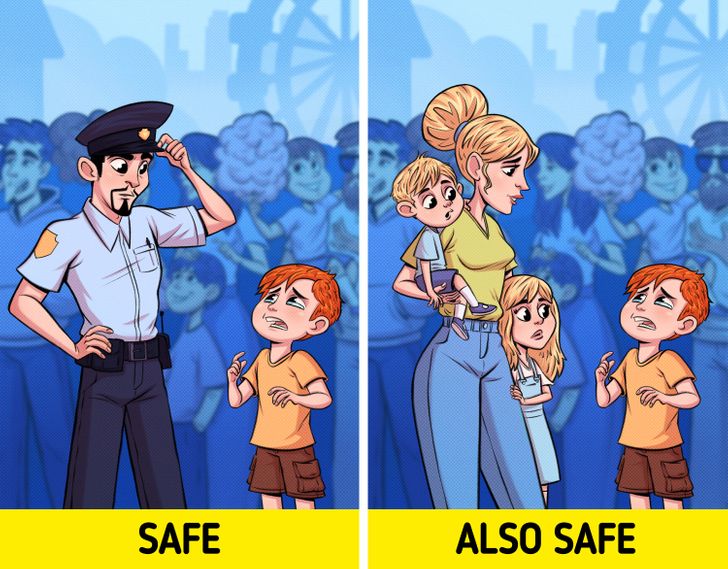
If none of the “safe people” from your list are around and your child is lost, tell them to look for a mom with kids and ask for their help. They can also try to find a police officer, but it’s more likely that a woman with a child will be easier to find.
5. Let others know you’re in danger.
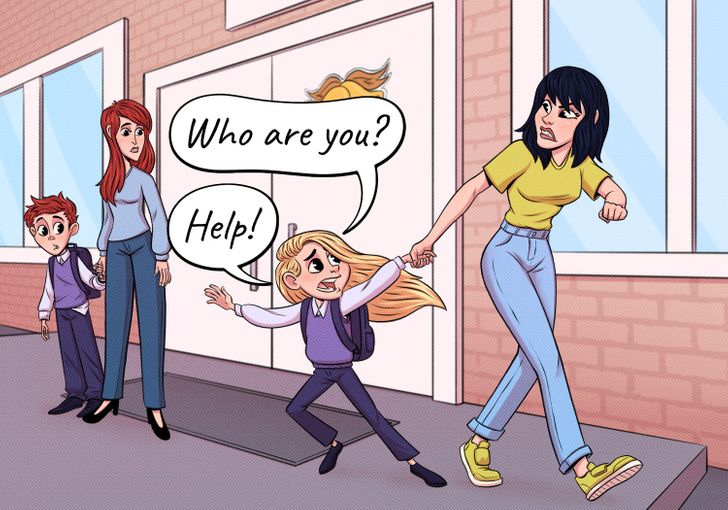
Children often throw tantrums, so a screaming child might not attract attention, even if they’re in danger. That’s why it can help to tell your kids to scream out something that would alarm others, like “Leave me alone! I don’t know you!” or “Where’s my mom and dad? Help!”
6. It’s okay to break things.
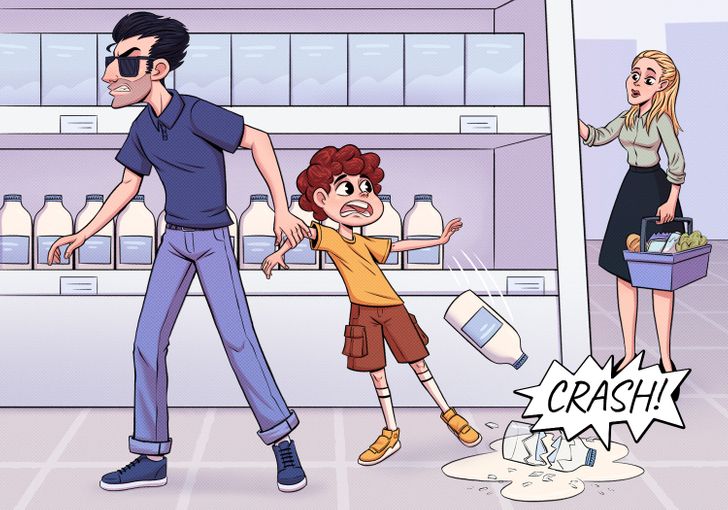
If screaming isn’t enough and they need to attract more attention, the kid can try to be destructive. For example, they could knock things off the shelf if they’re in a store, or break a car window with a rock.
7. How to say “no”
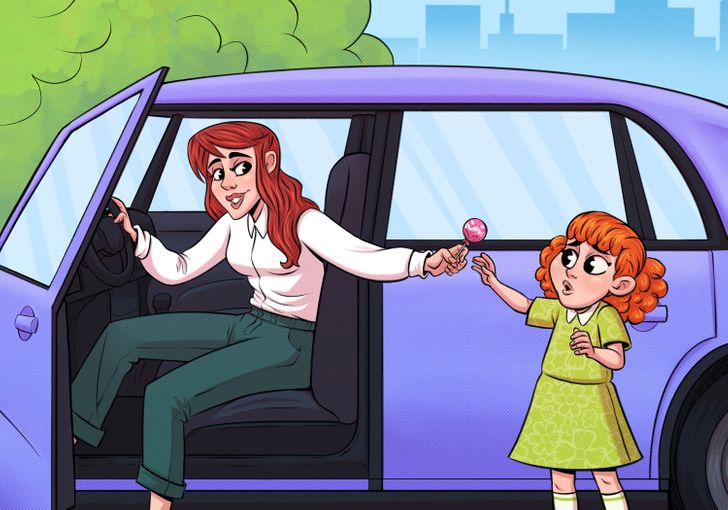
Your child should know that it’s okay to say “no” to an adult if it’s not their parent or a “safe” person. It can be hard for a child to be assertive and oppose an adult, but you should teach them how to do it. You can even play out different scenarios with your child, like, for example, how they will respond if someone approaches them and offers candy or asks for help.
8. Online safety is just as important.
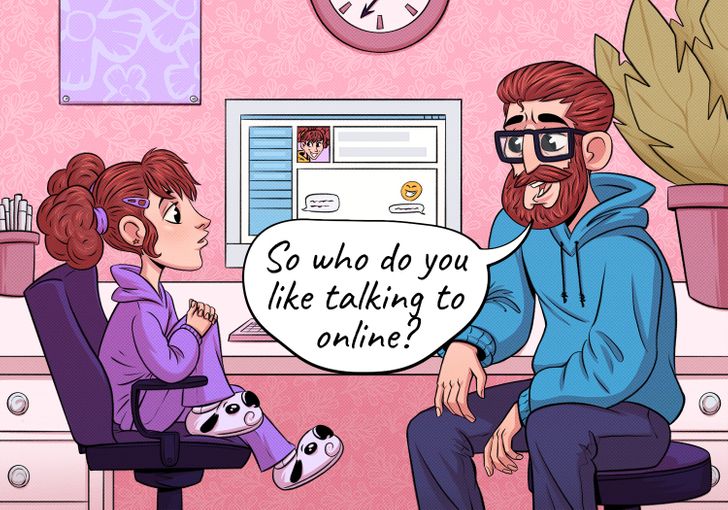
Talk to your child about what they do on the Internet, what apps they use, and what people they talk to. Make sure they know that being online can be dangerous too and that they should be careful talking to strangers there as well. Both of you can also make sure that people online are actually the same people they are in real life — friends or family members — and not imposters.
What else do you think parents should teach their children? What precautions do you take to make sure your kids are safe?
Comments
kids are spending so much time online and share so much info there. Its very dangerous
I am sure my children are always safe and none is going to kidnap them because I haven't any 😈
Great safety tips.
Related Reads
9 Outdated and Dangerous Ideas We’re Still Trying to Beat Into Our Children’s Heads

10 Things Only People in a Long-Term Relationship Can Understand

Women Share 10 Tips on How to Stay Safe While Out and About
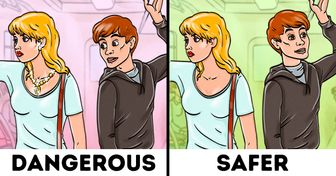
20+ Pictures That Totally Give Our Eyes Pleasure

15 People Who Weren’t Too Lazy to Reach for Their Camera and Never Regretted It

13 People Who Mustered Up the Art of Transformation

17 Comics on How Girls’ Lives Have Changed Since the ’00s

20 People Who Blossomed Into Their Full Glory at Age 30

22 Sharp Illustrations That Prove the World Is Going Crazy

People Online Noticed Brad Pitt’s New Partner Is a Spitting Image of Angelina Jolie

Helen Hunt, 60, Stuns During Her Latest Appearance, and Her Lips Become the Center of Attention

Keanu Reeves Finally Cuts His Long Hair, and His New Look Causes a Stir
